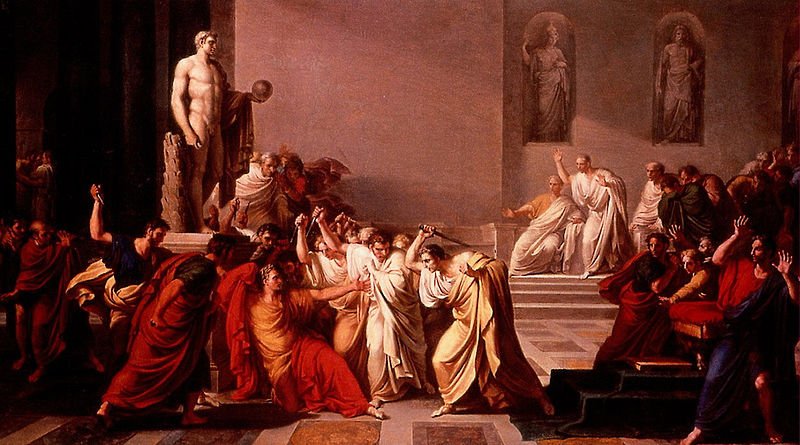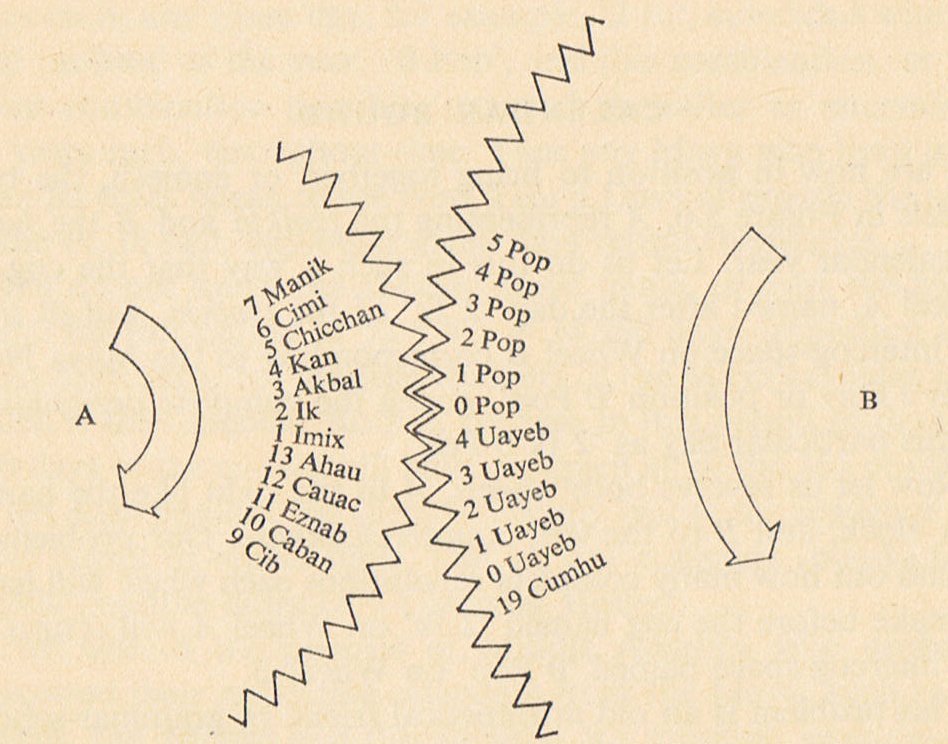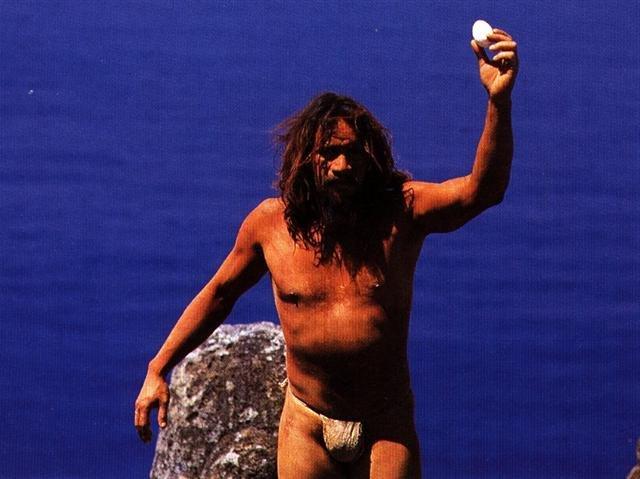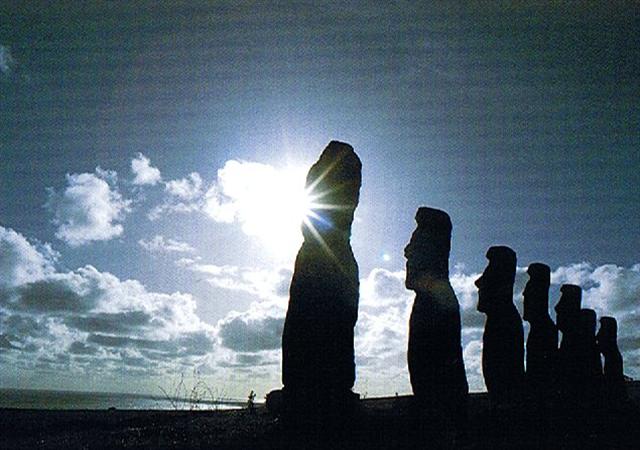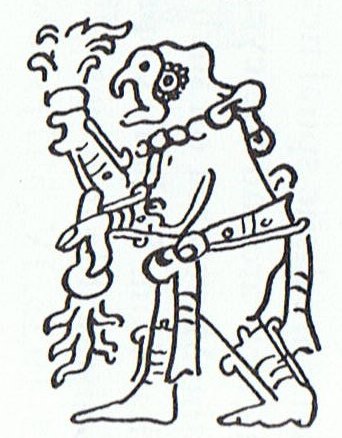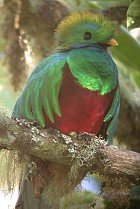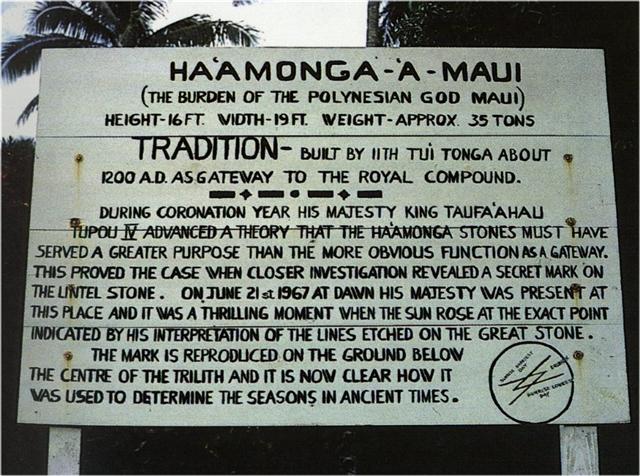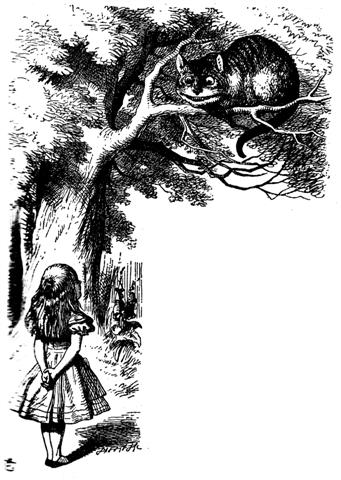352. The univesal constant pi (π) for drawing circles in the sand
was possibly complemented in nighttime with phi (Φ) for measuring time (divided in 2 by midnight).
When the Sun had gone down his 3 torches were inverted, we can perceive from the Mayan picture above ... The Polynesians mingle the time-indications based on the position of the sun with others which are derived from the life of men and nature. We are told that the Hawaiian day was divided into three general parts, 1, breaking the shadows, 2, the plain, full day, 3, the decline of the day ... with their 5 + 2 * 4 = 13 tongues of flames hanging down from the tail respectively from the pair of feet of this 'ape'-like beast. ... The old explanation, which has again been revived by Halévy, is that it denotes an 'ape,' the character Q being taken to represent an ape with its tail hanging down. It may also be referred to a Talmudic root which would signify an 'aperture' of some kind, as the 'eye of a needle,' ... Lenormant adopts the more usual explanation that the word means a 'knot' ... ... In Sweden the custom is to throw the Christmas Tree away 20 days after December 24 (358), which means in day 378 (the synodic cycle of Saturn). The name of this day (January 13) is Knut (Knot) ...
The 3rd foot of the beast (Lat. brutus) ... The brutes of spring caused the downfall of both Captain Cook and Julius Caesar. We are close to the key myth of mankind, that which explains the regeneration of sun and of growth. Once at least some people kept the tradition living. I became interested in what really happened at March 15 and reopened Henrikson to find out: Caesar had been forewarned of the threat by the prophet Spurinna, who told him that a great threat was coming at Idus Martiae or just before [i.e. at 3-14]. The day arrived and Caesar was still living, walking to his meeting with the Senate when he happened to encounter Spurinna and told him jokingly that he was still alive. Spurinna calmely answered that the day had yet not ended. The Romans divided their months in two parts and the dividing point was Idus, which in some way was connected with full moon. March 15 was the midpoint of March, which is close to spring equinox. The old agricultural year defined the beginning of the year to the time when sun returned, and it was connected with Mars ...
evidently supported the bottom part of Uo:
While to the left in the overhead band of time there was a Sun quincunx resembling that in the top right corner of Pop. But instead of a central circle there was a black dot (probably indicating darkness). In the Egyptian view this dot (pupil) grew beyond noon:
pupil¹ ... orphan who is minor and hence a ward ... one under instruction ... L. pūpillus, -illa orphan, ward ... of pūpus boy, pūpa girl ... pupil² ... circular opening in the iris of the eye ... L. pūpilla ... secondary dim. of pūpa, girl, doll, pupil of the eye ... The application of the L. words to the pupil of the eye is based on, or parallel to, that of Gr. kórē maiden, girl, doll, pupil (the allusion being to the tiny images of persons and things that may be seen therein) ... In a year mesuring 365 days (haab) - wheel A below - 'the opening of the mouth' (for allowing air and light to enter in between Sky and Earth) came 80 days after the beginning.
... On the late afternoon of the June solstice, towards sunset, we reached Ahu Akivi near the centre of the western side of Easter Island. This is an inland site, 3 kilometers from the coast. Like Ahu Nau Nau at Anakena,
it has seven Moai, but in this case none of them have topknots and, uniquely, all face west towards the sea - which is clearly visible from the high point on which they stand. There is a curious tradition concerning these grizzled, otherworldly statues, solemn and powerful, with their blank, aloof eye-sockets gazing out over the limitless ocean. Like most of the other Moai of Easter Island the local belief is that they died, long ago, at the time when mana - magic - supposedly fled from the island never to return. However, in common with only a very few of the other Moai, it is believed that these particular statues still have the power, twice a year, to transform themselves into aringa ora - literally 'living faces' - a concept startingly similar to the ancient Egyptian notion that statues became 'living images' (sheshep ankh) after undergoing the ceremony of the 'opening of the mouth and the eyes'. Statues at Angkor were likewise considered to be lifeless until their eyes had been symbolically 'opened'.
... The Hawaiian day was divided in three general parts, like that of the early Greeks and Latins, - morning, noon, and afternoon - Kakahi-aka, breaking the shadows, scil. of night; Awakea, for Ao-akea, the plain full day; and Auina-la, the decline of the day. The lapse of the night, however, was noted by five stations, if I may say so, and four intervals of time, viz.: (1.) Kihi, at 6 P.M., or about sunset; (2.) Pili, between sunset and midnight; (3) Kau, indicating midnight; (4.) Pilipuka, between midnight and surise, or about 3 A.M.; (5.) Kihipuka, corresponding to sunrise, or about 6 A.M. Tzek resembles what we can see behind the tail of this Mayan 'brute', i.e. the 20-day month with an opening at the top, allowing Sun light to once again come in:
... They walked in crowds when they arrived at Tulan, and there was no fire. Only those with Tohil had it: this was the tribe whose god was first to generate fire. How it was generated is not clear. Their fire was already burning when Jaguar Quitze and Jaguar Night first saw it: 'Alas! Fire has not yet become ours. We'll die from the cold', they said. And then Tohil spoke: 'Do not grieve. You will have your own even when the fire you're talking about has been lost', Tohil told them. 'Aren't you a true god! Our sustenance and our support! Our god!' they said when they gave thanks for what Tohil had said. 'Very well, in truth, I am your god: so be it. I am your lord: so be it,' the penitents and sacrificers were told by Tohil. And this was the warming of the tribes. They were pleased by their fire. After that a great downpour began, which cut short the fire of the tribes. And hail fell thickly on all the tribes, and their fires were put out by the hail. Their fires didn't start up again. So then Jaguar Quitze and Jaguar Night asked for their fire again: 'Tohil, we'll be finished off by the cold', they told Tohil. 'Well, do not grive', said Tohil. Then he started a fire. He pivoted inside his sandal ... Possibly the head gear of the beast was intended to be like a mixture (hirohiro) between Tzek and Kankin (Skeleton Ribs) - which came 14 * 20 = 280 days from the beginning of the year.
280 (14 * 20) - 248 (September 5) = 32 (= 398 - 366):
... This tree whose foliage was always green was the ash tree Yggdrasil. One of its roots reached down into the depths of the subterranean kingdom and its mighty boughs rose to the heights of the sky. In the poetic language of the skalds Yggrasil signified the 'Steed of the Redoubtable' (Odin) and the gigantic tree received its name because, they said, Odin's charger was in the habit of browsing in its foliage. Near the root which plunged into Niflhel, the underworld, gushed forth the fountain Hvergelmir, the bubbling source of the primitive rivers. Beside the second root, which penetrated the land of giants, covered with frost and ice, flowed the fountain of Mimir, in which all wisdom dwelt and from which Odin himself desired to drink even though the price demanded for a few draughts was the loss of an eye. Finally under the third root of Yggdrasil - which according to one tradition was in the very heavens - was the fountain of the wisest of the Norns, Urd. Every day the Norns drew water from the well with which they sprinkled the ash tree so that it should not wither and rot away. In the higher branches of the tree was perched a golden cock which surveyed the horizon and warned the gods whenever their ancient enemies, the Giants, prepared to attack them. Under the ash tree the horn of the god Heimdall was hidden. One day this trumpet would sound to announce the final battle of the Aesir against all those who wished to cause their downfall. Near the vigorous trunk of the tree there was a consecrated space, a place of peace where the gods met daily to render justice. In its branches the goat Heidrun browsed; she gave Odin's warriors the milk with which they were nourished. Malevolent demons continually schemed to destroy the ash Yggdrasil. A cunning monster, the serpent Nidhögg, lurked under the third root and gnawed at it ceaselessly. Four stags wandered among its foliage and nibbled off all the young buds. Thanks however to the care and attention of the Norns the tree continued to put forth green shoots and rear its indestructible trunk in the centre of the earth ...
|
|||||||||||||||||||||||||||||||||||||||||||||||||||||||||||||||||||||||||||||||||||||||||||||||||||||||||||||||||||||||||||||||||||||||||||||||||||||||||||||||||||||||||||||||||||||||||||||||||||||||||||||||||||||||||||||||||






